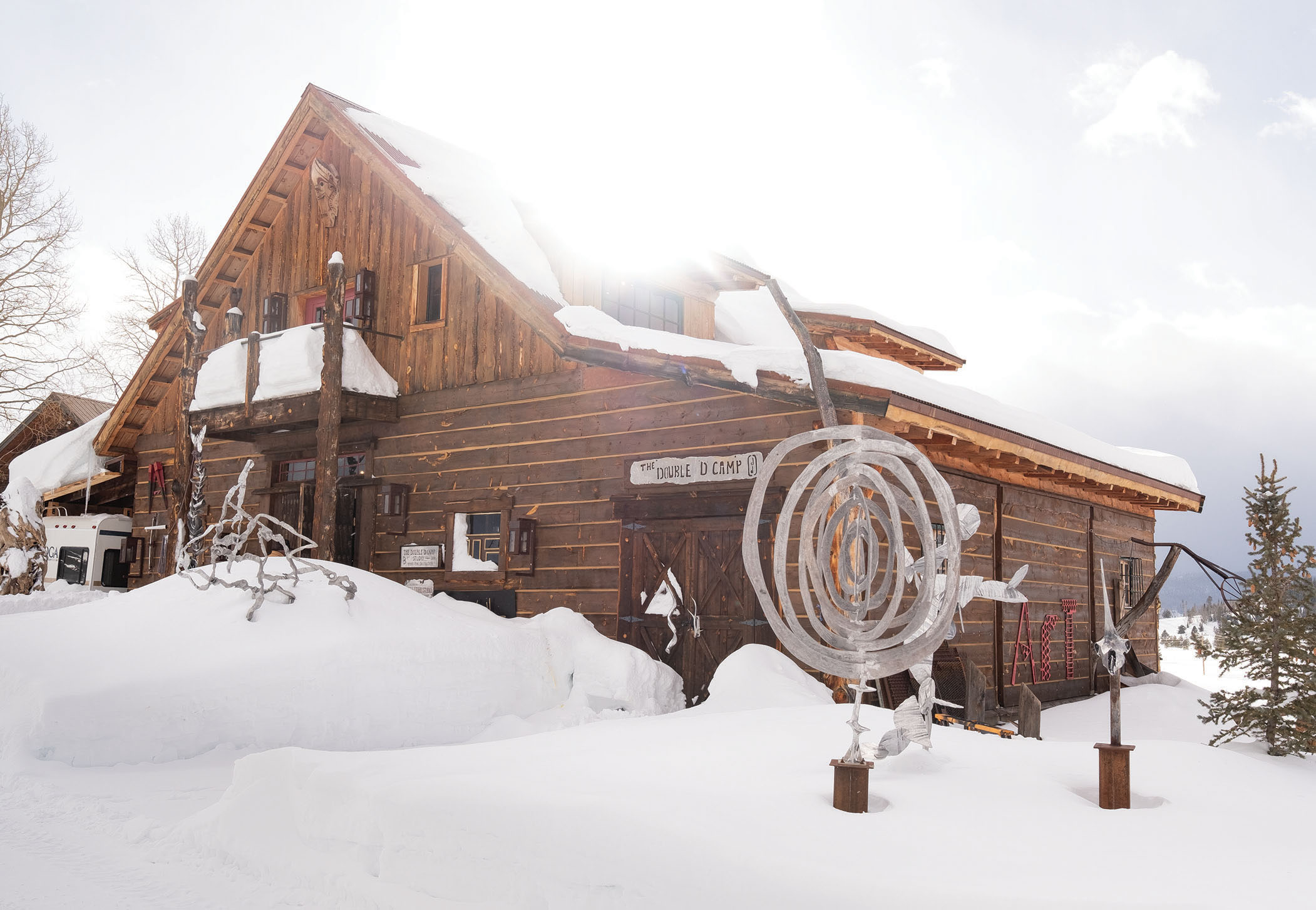
08 Mar In the Studio: Tracks and Traces
When international sculptor and octogenarian David Marshall announces that he’s considering retiring and opts to open his private studio in rural Colorado for visitors to “take a look at this and that,” you’d be crazy not to go. Over the last 55 years, Marshall has amassed a following that spans the globe with commissions ranging from flatware lines for Christian Dior to noteworthy public art installations in Europe.
Home for Scottish-born Marshall and his wife, Dagmar, is a remote farm in the picturesque village of Benaoján in the mountains of southern Spain’s Andalusia. In the neighboring town of Benahavís are Marshall’s working studio and his namesake gallery, which is run by his daughter. Marshall suffers from a serious case of wanderlust, which not only inspired his illustrious career but led him and his wife to purchase a property in Clark, Colorado, almost 20 years ago.

In the barn, the sculptures Stickleback, inspired by aquatic creatures, and Sumiq, one of David’s signature totems, are located on the first level.
Inside his hand-built two-story barn at the foot of Hahn’s Peak is a treasure trove of artwork and eclectic finds accumulated from a lifetime of travel. The nitty-gritty of his metal work is done in Spain, and he uses the barn to store and showcase works for his U.S. clients. In recent years, he’s limited appearances at large-scale art events, opting to invite enthusiasts of his work to the intimate setting in Colorado.

A custom fireplace from South America is a striking addition to the space.
For many years, Marshall has shown at Space Gallery in Denver, one of the few remaining galleries he chooses to host his revolving collections. In 2015, he veered from solo creations to collaborating with glass artist Jennifer Baker. At the time, both were showing at Circle 7 in Steamboat Springs when she asked if he’d make a metal base for an intricate piece of glasswork. This marked the start of an artistic journey the duo have shared since, with their first official joint show titled Symbiosis taking place at the Depot Art Center in Steamboat Springs, Colorado, later that year. “His style is very raw, and he works without boundaries, which has inspired my own creativity so much,” Baker says.

Artist David Marshall is notoriously curious about the natural world. Oversized doors, salvaged from Ronda, Spain, and antler door handles create a dramatic first impression at the entryway.
The idea of slowing down is lost on the prolific creator. If anything, the concept of retirement sparked one of Marshall’s most impactful collections yet. On a motorcycle trip to Morocco several years ago, his bike malfunctioned, causing Marshall to sit back in the desert for a few hours while support arrived. Notorious for his curiosity about the natural world, he became acutely aware of markings in the sand and the landscape around him.
“I was completely struck by these tracks — what made them, and how long would they be there before nature or human contact wiped them away for good?” he says. “It made me question, ‘Are we actually leaving anything behind when we go off, and what counts as a human track? Is it something that has been printed, written, built, invented, or an action?’” His musings formed the basis of a new body of work Marshall titled Tracks and Traces.
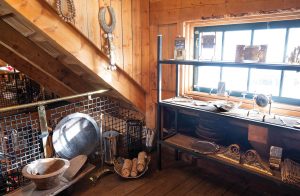
A collection of clocks, bowls, and home accessories made by the artist in brass or aluminum line the shelves on the barn’s second floor.
The concept behind the collection was not a new one. Marshall was always inspired to transform geomorphology — the metamorphosing shapes he witnessed in rocks, rivers, animal tracks, and the detritus of erosion — into three-dimensional artworks.

The sand-cast aluminum sculpture Sabretooth joins an impressive lineup of works.
“Nature teaches us to think beyond the concept of perfection,” he begins. “Few lines are ever straight; forms and textures allow us to appreciate the weird and wondrous. As a sculptor I am blessed with an infinite palette of organic configurations from which to draw upon.”
Marshall’s artistic journey is as unconventional as his sculptures. Raised in the United Kingdom, his father had visions of his son embarking on a career in finance. Marshall had other ideas. He left for Canada in the early ’60s, jumped on a motorbike, and made it through Central America and into South America to end up in Colombia. He settled in the mountains of Bogotá for a few years, where he learned to weld. In 1965, after non-ferrous metal studies at British Oxygen in Columbia, a serendipitous encounter led him to Spain, and as he says, “the rest is history.”
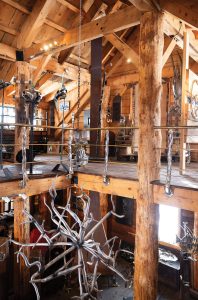
Well Cultivated, a sand-cast aluminum piece, hangs from the ceiling.
Over subsequent decades, Marshall has explored most corners of the world, stopping to spend time amid various cultures, perpetually keen to pick up new skills. He learned firsthand how to carve in Thailand, cast in Java, hammer weld in Rajasthan, silversmith in Bali, and wood carve in Ghana. As a result, his work is a hodgepodge of materials amassed from his numerous stops, many of which remain on display at his barn in Clark.

Years of collectibles from time spent traveling the world, including to Java, Rajasthan, and Ghana, are displayed in the barn.
“Talk to David for more than 10 minutes about his work, and you’re transported to far-flung places and his appreciation for how the artisans of these places create and collaborate,” says Michael Burnett, co-owner of Space Gallery. “It’s clear he has absorbed it all, and I think that’s why I’m drawn to his work. It reflects on his journey and captures you there in a foreign mystery, much like the man himself.”
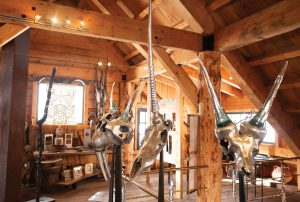
The angularity of Marshall’s metal sculptures complement the studio ceiling’s pine rafters.
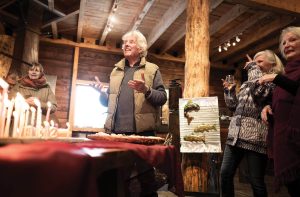
David celebrated his recent birthday in the barn, thrown by his wife Dagmar and friends from their home in North Routt, Colorado.
As a self-professed gatherer of worldly objects, much of Marshall’s work centers on repurposing materials to fuel his appetite for abstract art. Decades of observations and sketches fill his leather journals, where his intricate scribbles spark ideas and form the basis for every piece. In his studio, amid a collection of tools from welding equipment to plasma cutters, every sculpture starts in a customized polystyrene mold, which is then individually sand-cast in brass or aluminum, finished, and mounted or erected. Murals and totems have become his signature works of late, all depicting a track or trace that morphed out of reality or his exhilarating imagination.

Mercator Sailing makes a striking outdoor feature against the snowy backdrop of Hahn’s Peak Village.
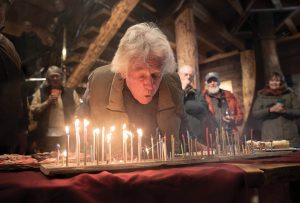
“Sculpture is a dedication, not a career,” Marshall says. “This primordial necessity, this gene of creativity, has shaped and motivated my life for the last 50 years.”
Despite his global following, Marshall remains humble to the core. His Colorado barn of reclaimed pine is as unpretentious from the outside as the artist himself. What lies within is a testament to a lifetime of observations and respect for the natural world, and the tracks and traces left behind.
Suzi Mitchell is a Scottish freelance writer who lives in Colorado with her three children, a spoiled dog, and a nonchalant cat. When not writing about artisans and architecture for publications on both sides of the Atlantic, she paints.
Photographer Bowen Rodkey lives in Steamboat Springs, Colorado, where he also owns Big Iron Coffee Co. with his wife. He studied at the Rochester Institute of Technology and recently discovered you can develop black-and-white film using instant coffee.






No Comments